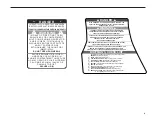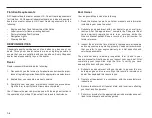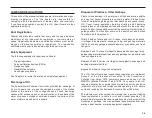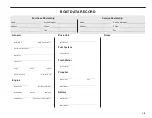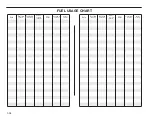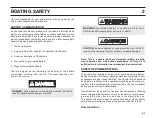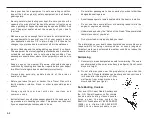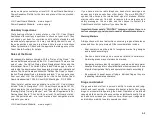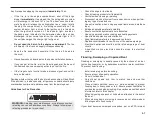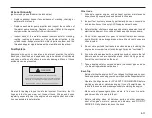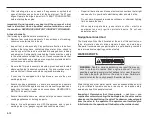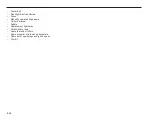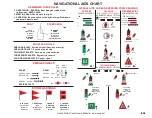
•
Keep your boat and equipment in safe operating condition.
Inspect the hull, engine(s), safety equipment, and all boating
gear regularly.
•
Be very careful when fueling your boat. Be sure you know the
capacity of your boat’s fuel tank and the amount of fuel you use
when operating at frequently used engine speeds (RPMs). Ask
your Chaparral dealer about the capacity of your boat’s
fuel tank.
•
Make sure you have enough fuel on board for anticipated cruis-
ing requirements. In general, use 1/3 of your supply to reach
your destination and use 1/3 to return. Keep 1/3 in reserve for
changes in your plans due to weather or other circumstances.
•
Be sure lifesaving and fire extinguishing equipment is on board.
This equipment must meet regulatory standards and it should be
noticeable, accessible, and in safe operating condition. Your
passengers should know where this equipment is and how to
use it.
•
Keep an eye on the weather. Be aware of possible changing
conditions by checking local weather reports before your depar-
ture. Monitor strong winds and electrical storms closely.
•
Always keep accurate, updated charts of the area on
board your boat.
•
Before you leave the port or harbor, file a Travel Plan with a
family member, relative, friend, or other responsible person
ashore.
•
A l w a y s o p e r a t e y o u r b o a t w i t h c a r e , c o u r t e s y a n d
common sense.
•
Instruct at least one other passenger aboard in the basic operat-
ing procedures in handling your boat. This person can take over
if you unexpectedly become unable to do so.
•
Do not allow passengers to ride on parts of your boat other than
designated seating areas.
•
Ask all passengers to remain seated while the boat is in motion.
•
Do not use the swim platform or boarding ladder while the
engine or engines are running.
•
Understand and obey the “Rules of the Road.” Always maintain
complete control of your boat.
•
Do not overload or improperly load your boat.
The information on your boat’s capacity plate does not override your
responsibility for using common sense or sound judgment.
Turbulent water and unfavorable weather conditions reduce the
capacity of your boat.
Swimming
1. Swim only in areas designated as safe for swimming. These are
usually marked with a swim area buoy (see figure). Do not swim
alone or at night.
2. Do not allow anyone near the propeller(s), even when the
engine is off. Propeller blades can be sharp and can continue to
turn even after the engine is off. Stay
well away from areas marked by a
diver down float (see figure).
Safe Boating Courses
Your local U.S. Coast Guard Auxiliary and
the U.S. Power Squadrons offer compre-
hensive safe boating classes several
times a year. You may contact the
Boat/U.S. Foundation at 1-800-336-BOAT
(2628), or in Virginia 1-800-245-BOAT
(2628). For a course schedule in your
2-2
Summary of Contents for 2012 SSi
Page 15: ...1 7...
Page 16: ......
Page 20: ......
Page 49: ...3 14...
Page 74: ...5 16...
Page 75: ...5 17...
Page 93: ......
Page 101: ......
Page 108: ...WIRING SCHEMATICS 12 12 1 196 206 216 SSI...
Page 109: ...12 2 196 206 216 SSI...
Page 110: ...12 3 226 SSI...
Page 111: ...12 4 226 SSI...
Page 112: ...12 5 246 SSI...
Page 113: ...246 SSI 12 6...

